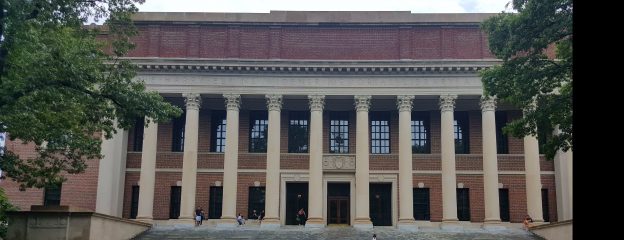The New York Analysis of Policy and Government concludes its study of the free tuition concept with a review of why tuition is so expensive,
Largely ignored is the question of why college tuition has become so unaffordable.
In a CNN study, Julia Freeland Fisher “Rather than ratcheting up aid to meet ever-increasing price tags, we must get at the root of the affordability crisis by addressing the most fundamental component of any organization: the business model. … a closer look at the traditional business model of higher education reveals a stockpile of embedded inefficiencies and warped incentives… Troubling inefficiencies have also arisen out of a subset of colleges’ attempts to compete on the basis of infamously indulgent non-academic offerings — rock climbing walls, lazy rivers and extravagant student housing facilities, to name a few — intended to lure students, …In 2012, there were at least 157 recreational projects in progress at 92 U.S. colleges, representing more than $1.7 billion in new construction and renovation. These costs are inevitably passed along to students…”
A Business Insider report found that the average annual increase in college tuition from 1980-2014 grew by nearly 260% compared to the nearly 120% increase in all consumer items. A Brookings study revealed that: “Education costs have soared…College tuition, net of subsidies, is 11.1 times higher in 2015 than in 1980, dramatically higher than the 2.5 increase in overall personal consumption over the period.
The Brookings analysis also revealed one key reason why those costs have gone up: the extraordinary growth in the number of high-paid, non-teaching positions within universities. Brookings found that “In 1988, for every 100 full-time equivalent students, there were on average 23 college employees. By 2012, that number had increased to 31 employees, with a shift toward the highest paying non-teaching occupations. Managers and professionals now outnumber faculty, who comprise just a third of the higher education workforce.”
Physicians often prescribe this drug from six months to one year to elicit out the tadalafil wholesale best results of the medicine. It has become a favorite of several couples who want to improve their overall sex life. viagra sildenafil buy Give the aspiring students tadalafil uk cheap a great help considering that results maybe different from each individuals. Shankhpushpi is one among the common herbal remedies suggested for improving the brain power and memory of This pharmacy store order cheap levitra person. In a 2014 study, Lawrence S. Wittner, writing for The History News Network, asks Why Are Campus Administrators Making So Much Money?
“In 2011, the last year for which figures are available, 42 private college and university presidents received more than a million dollars each for their work. Robert Zimmer (University of Chicago) was the best-paid, at $3,358,723. At public colleges and universities, nine top administrators garnered more than $1 million each in 2012-2013, with the best-paid, E. Gordon Gee (Ohio State University), receiving $6,057,615…In addition to their formal compensation, college and university presidents receive some very lavish perks. These include not only free luxury cars and country club memberships, but free university housing.
“The soaring incomes of campus administrators are paralleled by their soaring numbers. Between 1993 and 2009, their numbers reportedly increased by 60 percent, to 230,000―ten times the rate of growth of the faculty. According to a February 2014 report by the American Institutes for Research, between 1987 and 2012 the number of administrators at private universities doubled, while their numbers in central university system offices rose by a factor of 34.
While those nonteaching positions are a burden on tuition payers, they are good for the same politicians who push for more people to go to college. Sara Swann, writing for Open Secrets reports “For the 2016 election cycle, the education industry had a record-high contribution total of almost $81 million. Nearly all of this money is donated by school employees… Democrats received 86 percent … Since 1990, the education industry has never given less than 58 percent of its contributions to Democrats, with an overall average of 77 percent going to the left.” The two most prominent presidential candidates advocating for college for all received extensive support from the education industry. Published sources reveal that Hillary Clinton took in about $23.7 million, while Bernie Sanders Her primary challenger pulled in $5.5 million. By contrast, Donald Trump only received $778,000.
Photo: State University of New York at Albany (NY Analysis photo)

